1lumen selects and reviews products personally. We may earn affiliate commissions through our links, which help support our testing.
Cyansky H5 review

Cyansky H5 pecifications
| Brand/model | Cyansky H5 |
|---|---|
| LED | CREE XHP35 HI |
| Lumens | 1300 lumens (white), 300 lumens (green), 100 lumens (red) |
| Beam intensity | 90,026cd white, 24312cd green, 8102cd red |
| Battery config. | 1*21700 |
| Material | Aluminum |
| Modes | 4 |
| Blinkies | Strobe |
| Reflector | OP (orange peel) |
| Waterproof | IP68 |
| Review date | January 2021 |
Introduction:
Cyansky (owned by Freasygears) is a fairly new name in flashlights. They seem to be gaining traction with quite a few of their lights being reviewed by enthusiasts. The weird thing is that you don’t seem to be able to buy their lights anywhere yet. Hopefully, by the time you’re reading this, they’ll be on sale somewhere.
This review is of their H5. It’s described as a Multi-color Long Range Hunting Flashlight. The 600m throw and 1300lm specs are fairly typical but the multi-color feature is what interested me in the light.
This light can output white, green and red light, from the white LED thanks to the use of a patented built-in filter. There aren’t many lights that can do 3 colors. Most others use separate LEDs, which means they either don’t throw as far or the LEDs are off centre. The only other light with a built in red/green filter that I know of is the kids Playskool flashlight!
Cyansky suggests that the green H5 can be used for hunting feral hogs (wild boar) and the red can be used for deer and coyotes.
Package quality.
The H5 comes in a fairly fancy laminated cardboard box with foam inserts for protection. As well as the main box, I received a gun mount and remote switch in the package. These seem to be optional extras.
The foam that was cut out (so the H5 would fit) was included too. Although the foam is flashlight-shaped, they turned into swords as soon as I gave them to my kids.
The remote tactical switch replaces the tail cap and includes both a forward-clicky switch and a momentary-only switch. The switches attach to a gun with a standard dovetail rail, though also works perfectly fine without a gun.
The main gun mount I received is different to what Cyansky shows on their website. Instead of a rail mount it’s an adjustable double tube mount, which takes tubes between about 25-32mm. The closest thing I have to a rifle is a broom, which fits solidly – I’d expect it to mount to a rifle fine too. You could also use this to mount a light to a bike but it would point sideways if attached to handlebars.
The box didn’t come with a lanyard.
In the box, there is
- Cyansky H5
- 21700 Battery with built in USB-C charging
- 1 spare o-ring
- Spare tail cap
- Manual
- Warranty card
- Holster
- USB-C cable
Optional extras:
- Gun mount
- Tactical switch
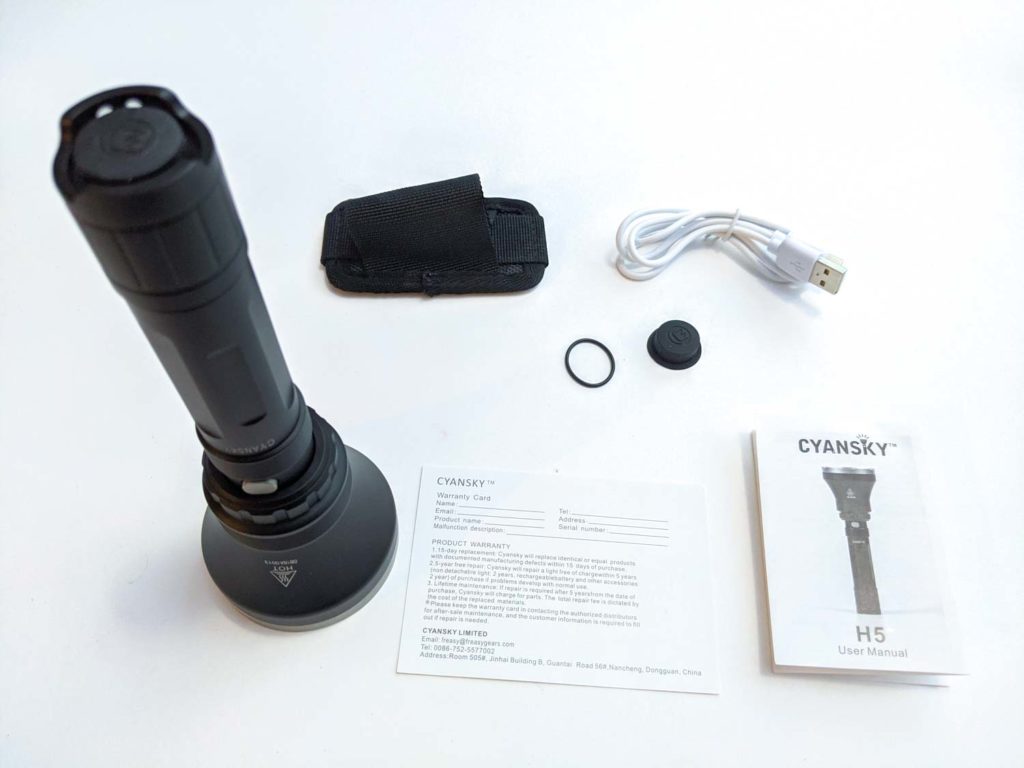
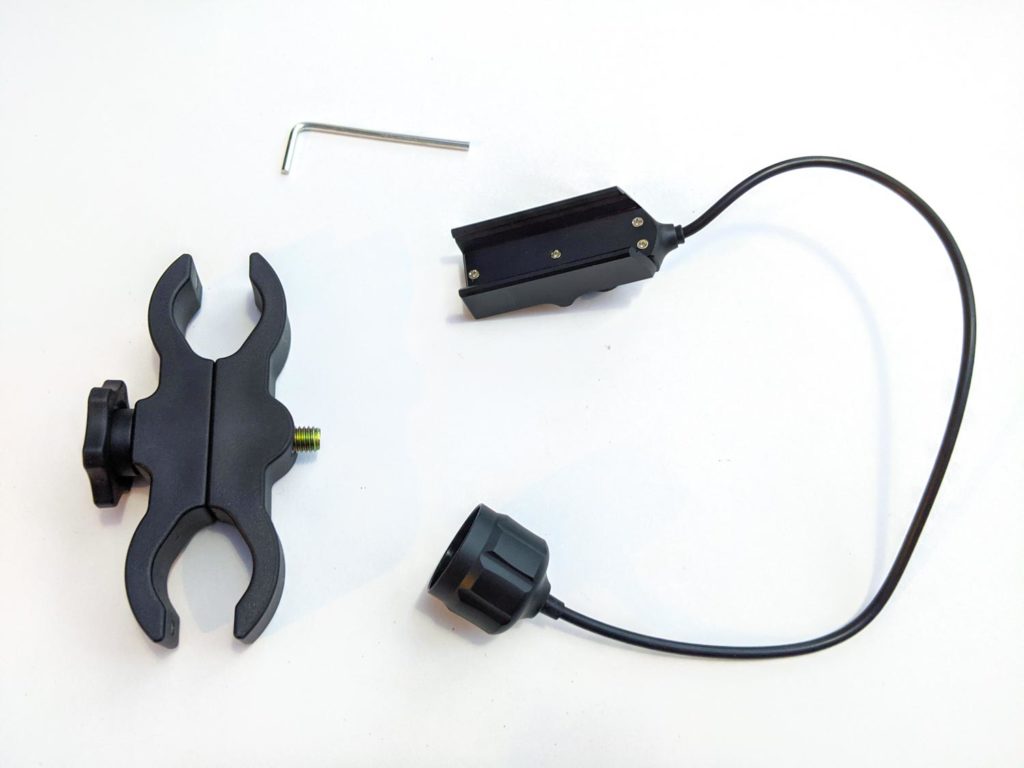
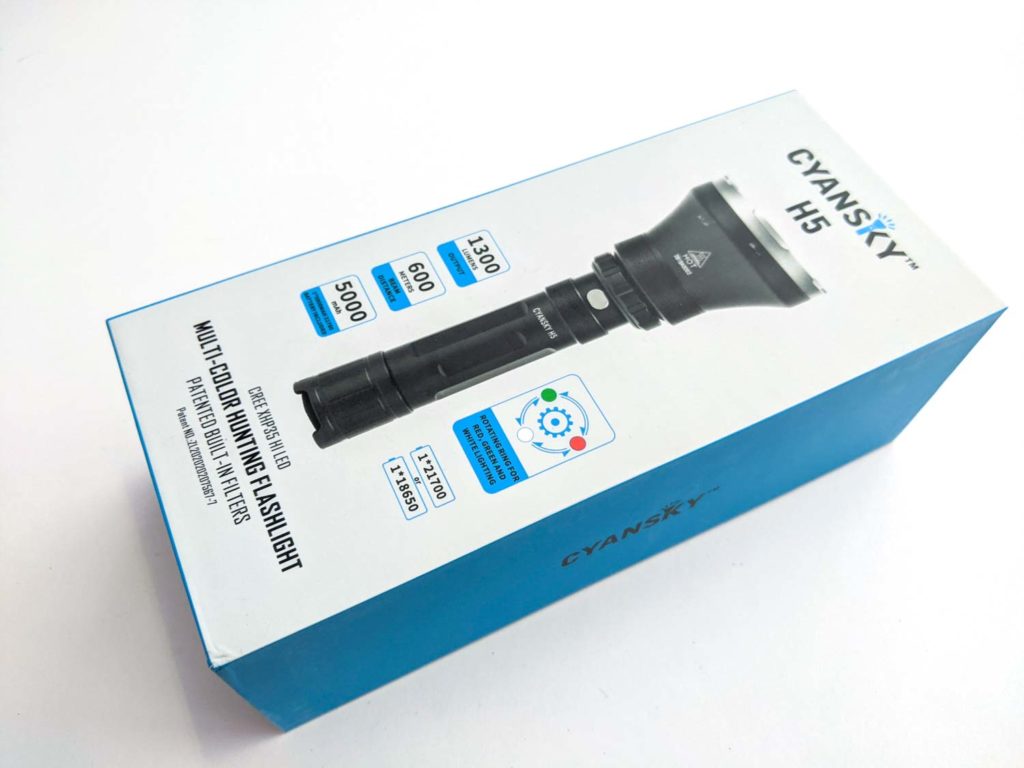
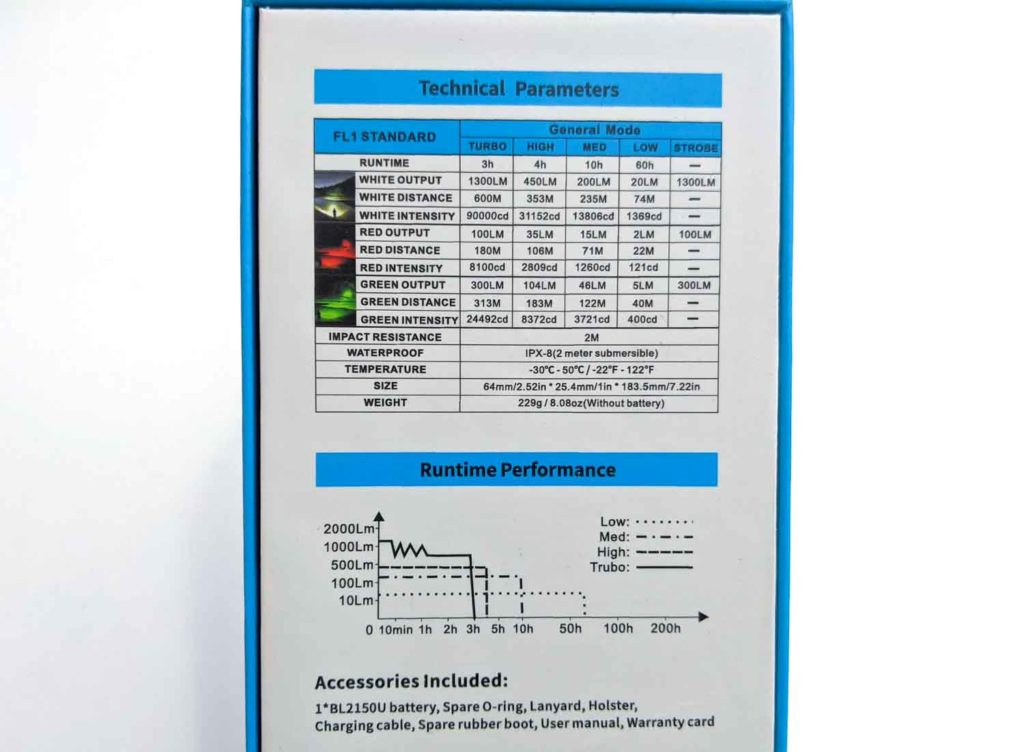
Handling of the light
One of the first things you’ll notice when you pick up the H5 is how slim the body tube is. At 23.9mm at its slimmest, it’s barely wider than some 18650 lights.
There’s no knurling on the body tube but the tail cap has light grooves for grip. The head has knurling that looks a bit like heat fins but are more like fine threads. Whilst it’s smooth, the light is still fairly easy to grip due to the slightly larger tail cap.
The H5 has 2 switches and a rotating control for the filters.
The physical switch is a forward-clicky, which is standard for a tactical light as it provides momentary on with a half-press. It’s easy to press with a thumb as the tail cap has indents.
The grey e-switch sits proud and is easy to find. It’s easy to reach with a thumb but a challenge to reach when your thumb is resting on the tail switch. With a bit of practice, I can reach the e-switch with my baby finger whilst my thumb is activating the tail switch. More about the UI later on.
The rotating filter control is clever. It seems a bit like a magnetic control ring. It has a 2:1 gear to rotate between the 3 options: no filter, red filter, and green filter. These all have their own mini reflector. This is a moving physical mechanism that joins the inside and outside of the light so it’s a potential point of failure. The light is rated IP68, so should be waterproof but I’d be cautious of water ingress here. There’s about 2mm of play as it rotates but as you turn it round it kind of locks each filter into place. When locked in, the mini reflectors are aligned nicely, with the LED being well centered. The light output dims as you rotate between the different colours, as the solid part of the mechanism blocks the LED.
There’s no anti-roll feature and the light will very easily roll when it’s on a table. It will tail-stand but could easily get knocked over as it’s top-heavy. The holes for the lanyard attachment are on the side, which doesn’t stop it tail-standing when the lanyard is attached.
The holster is a few bits of nylon stitched together. Nothing special but it works well enough. The holster will fit on a wide belt and would fit most 18650 or 21700 lights. The H5 is a little loose in the holster but would probably only come out if you were somersaulting.

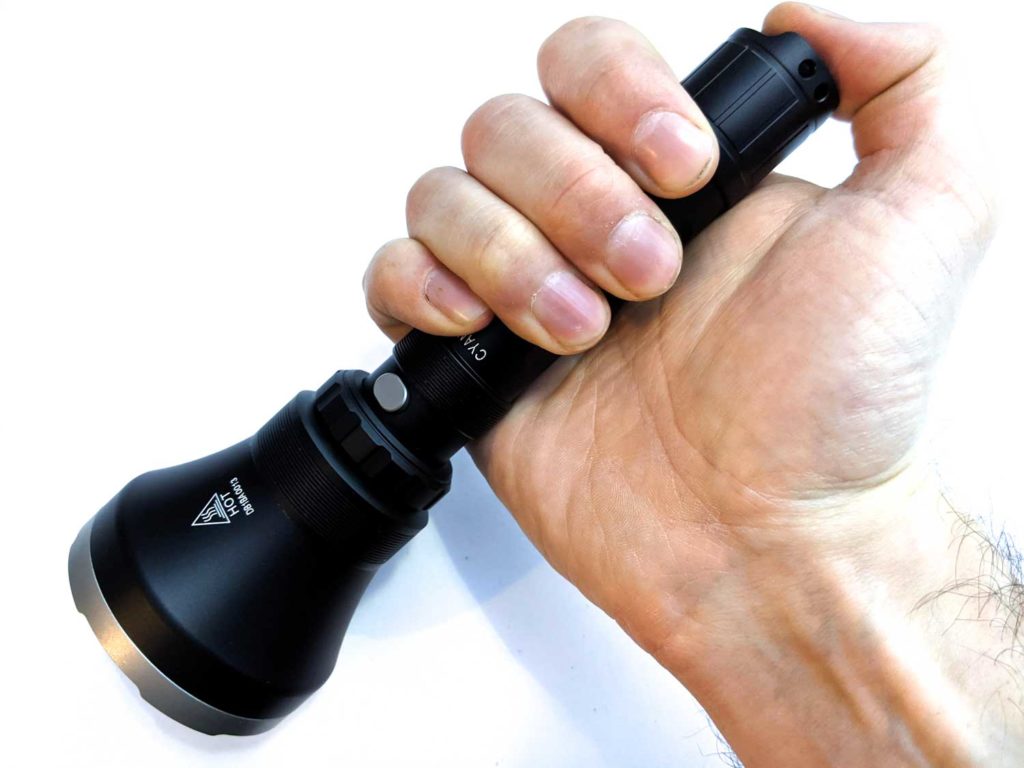
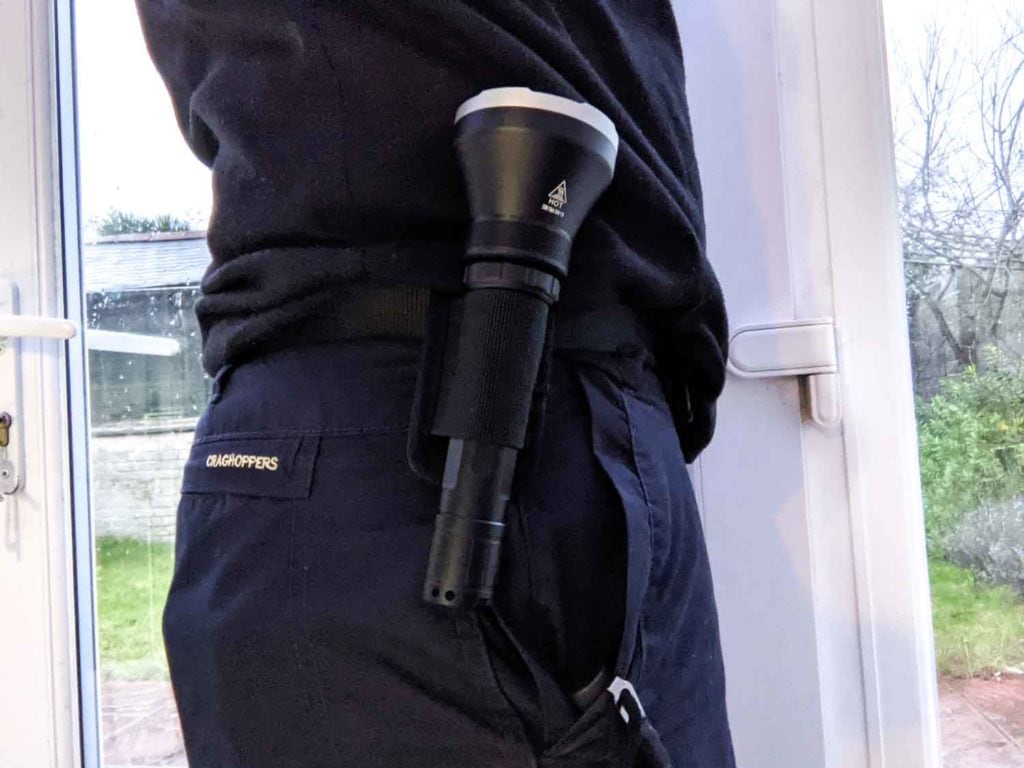
Build Quality, and Warranty
The H5 feels and looks like a well-built aluminum light. The tube definitely seems on the thin side though.
The springs are listed as double gold-plated and as a tactical light are designed to ensure the light maintains connection when it encounters recoil from a gun. Whilst there’s a normal spring at the tail end, strangely, there isn’t really a spring on the head end – at least there’s not a springy spring. This doesn’t seem to affect the light though and the H5 kept the circuit connected, even when the light was knocked. This could have been intentional from the start or it might be that this was a last-minute change so the light could accept 21700 cells with built-in charging circuits.
The spring isn’t bypassed on the normal tail cap but the spring on the remote switch accessory is.
The anodization is shiny back MIL-A-8625 Type III.
The threads are square-cut and well lubed. Too well lubed in fact, as when I first got the light some of the lube needed wiping off for the H5 to make a good connection (more on this later). Another unusual thing about the H5 is the threads on the head-end of the body tube are inward-facing. Again, this doesn’t seem to cause any problems but is just a bit different to what you’d expect. The tail cap looks like it would screw straight onto the head but the tailcap diameter is a little smaller than the head.
Freasygears provide a manufacturer’s warranty. You get 15 days free replacement for any manufacturer defects. They also give a generous 5-year warranty for repairs under normal use.
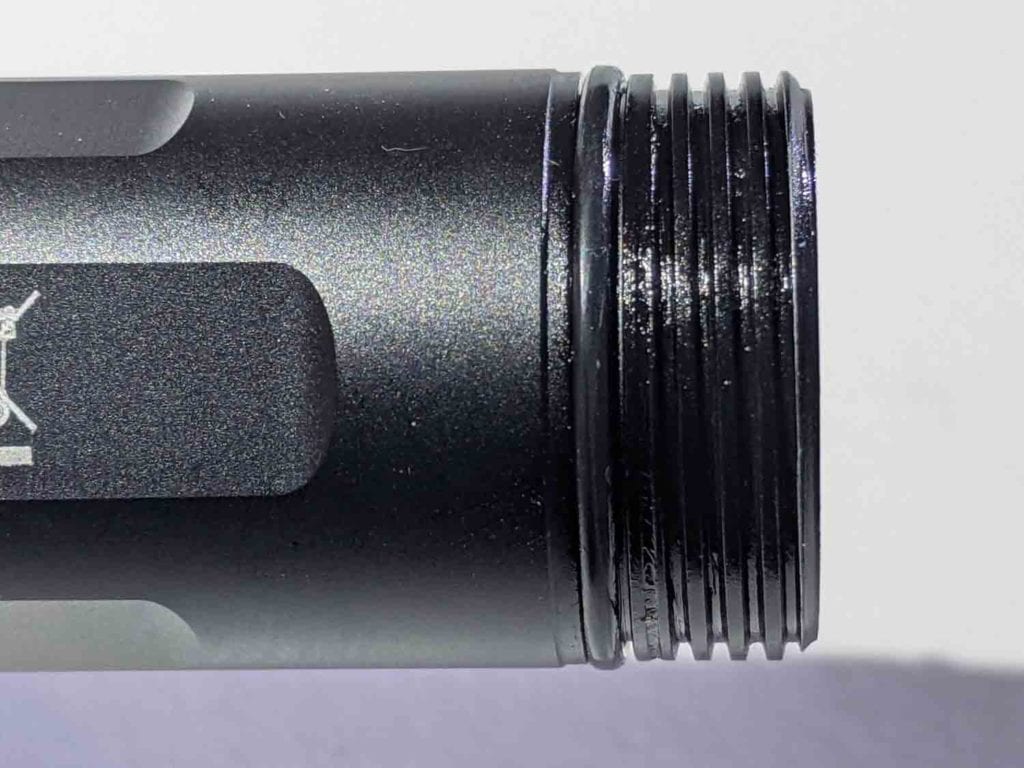
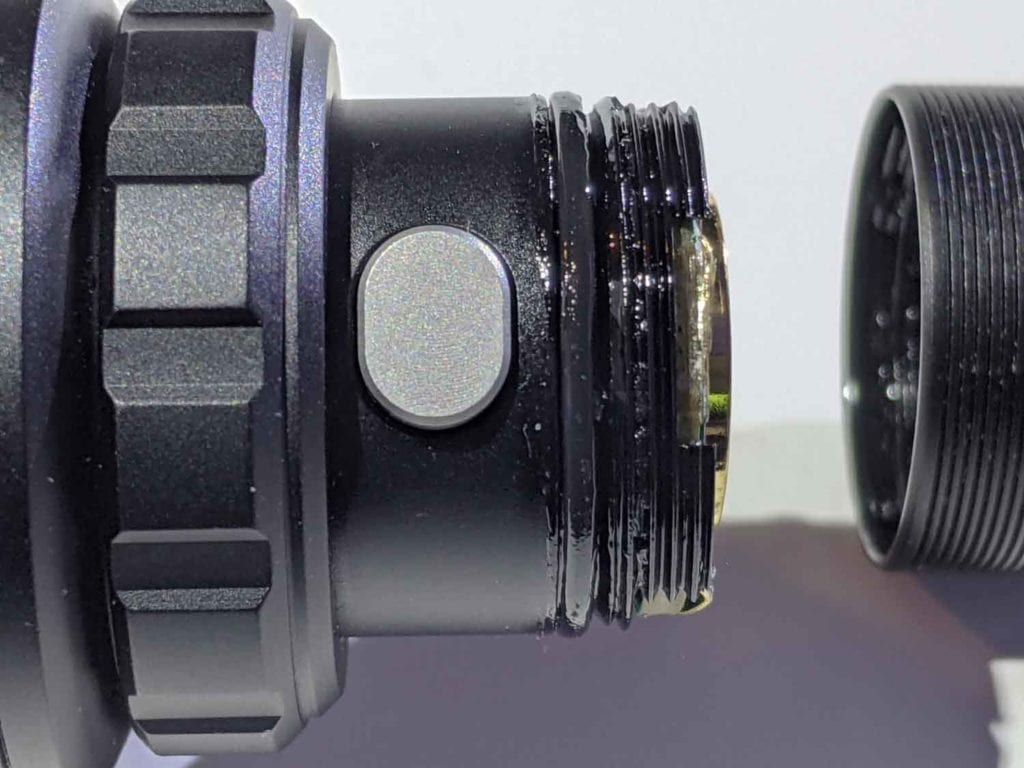
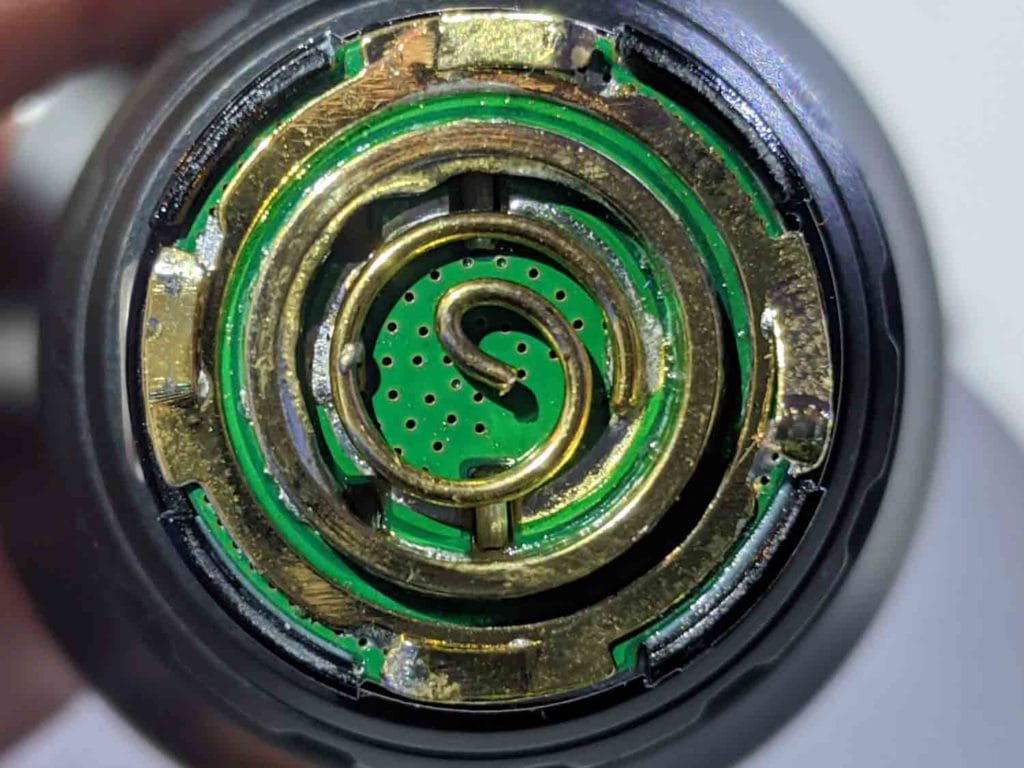
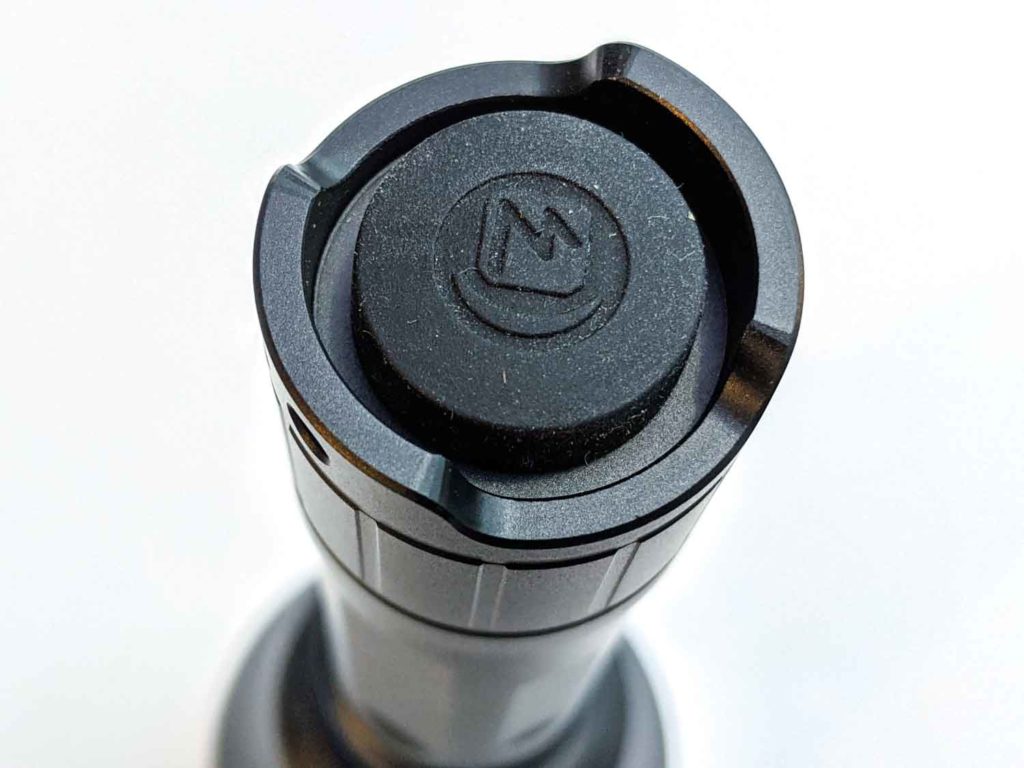
LED, Lens, Bezel, and Reflector
The Cyansky H5 comes with a CREE XHP35 HI D4 LED. The XHP35 is a good choice for a long-distance flashlight. This is a 3535 sized LED but it’s 12V, so can’t be swapped easily with a more common 3V one. The LED is the HI (high intensity) version, which means it doesn’t have a dome and will throw a bit more. The bin is listed as D4 bin, which is the low-mid CRI and higher lumens per Watt. Some flashlights drive the XHP35 to 2000 lumens, so 1300 from the H5 shouldn’t be pushing it too much. The color temperature isn’t mentioned but it looks to be around 6500K compared to other known flashlights.
The beam looks very white and even all over – no green or yellow tint. So while 6500K is cooler than I’d normally like, it’s actually a better beam than some more neutral lights I have. In fact, the beam is much better than I expected, considering the unusual reflector design. The main orange peel reflector does a good job of evening out the light and the mini reflectors in the rotating mechanism don’t seem to cause any unwelcome beam artifacts. The bottom of the main reflector is almost horizontal, where it meets the rotating mechanism.
The bezel is silver-colored stainless steel. It’s coated in something, so it’s not as reflective as some bezels. The bezel is lightly crenelated, which means you can see if you left it on whilst head-down.
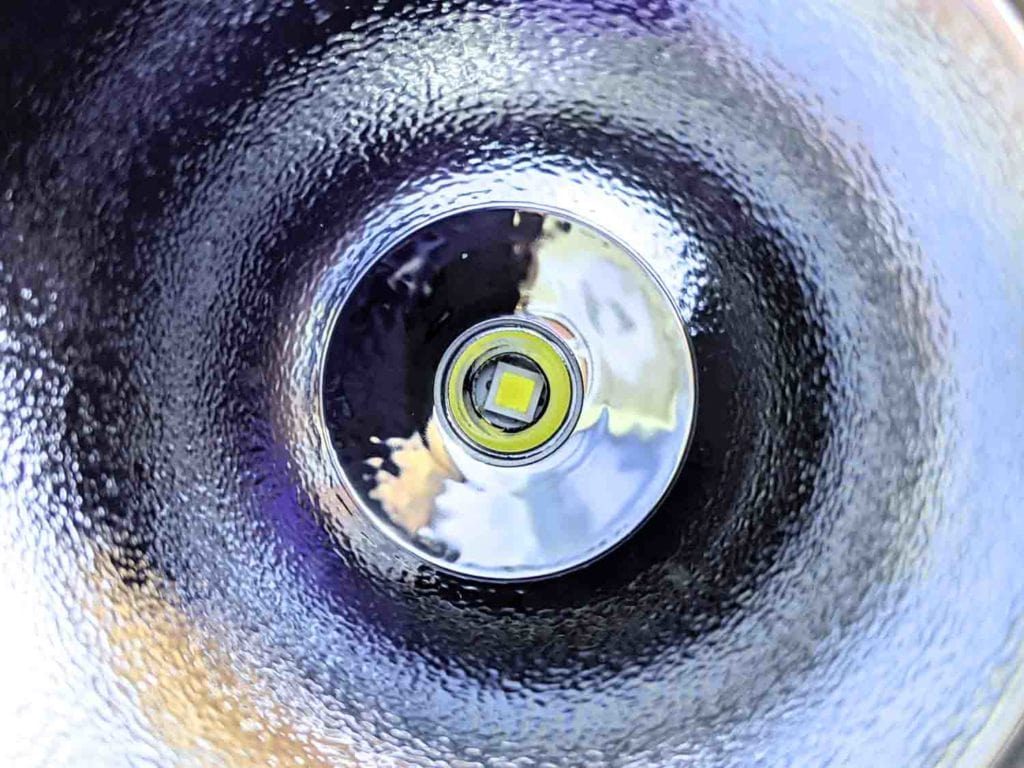
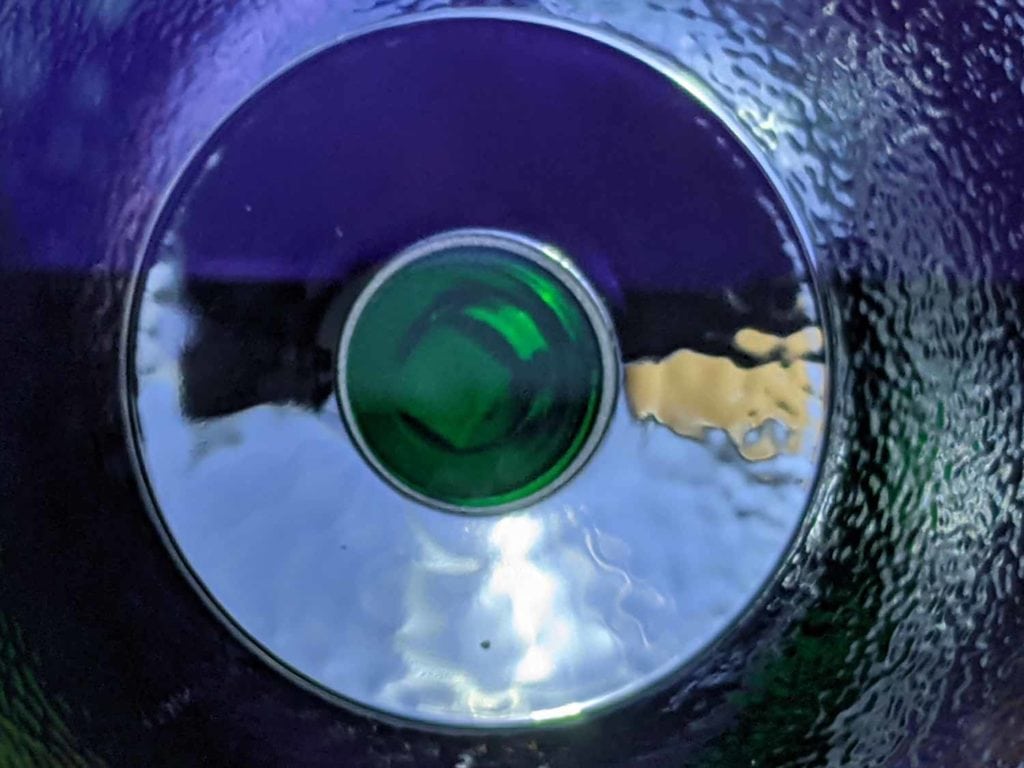
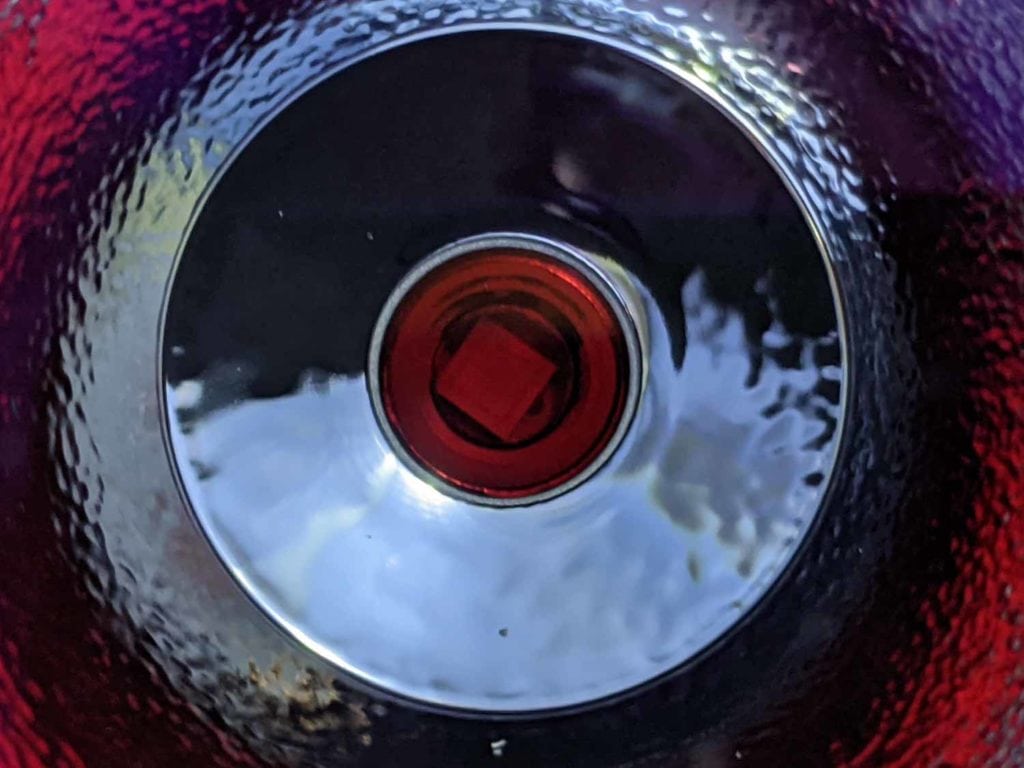
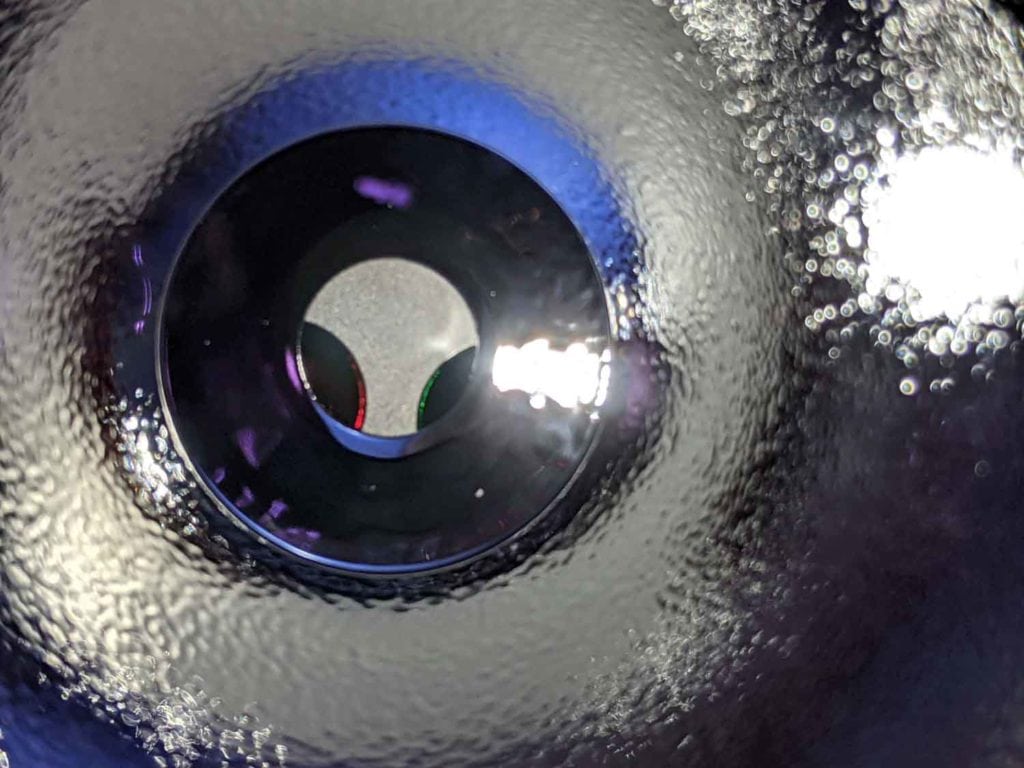
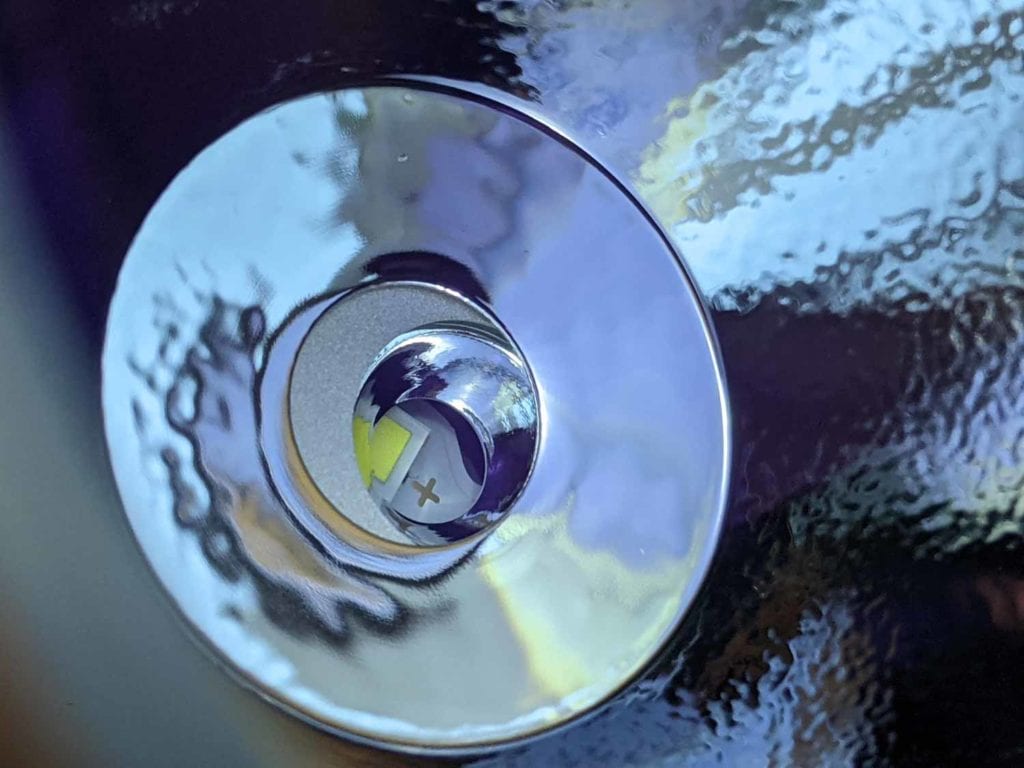
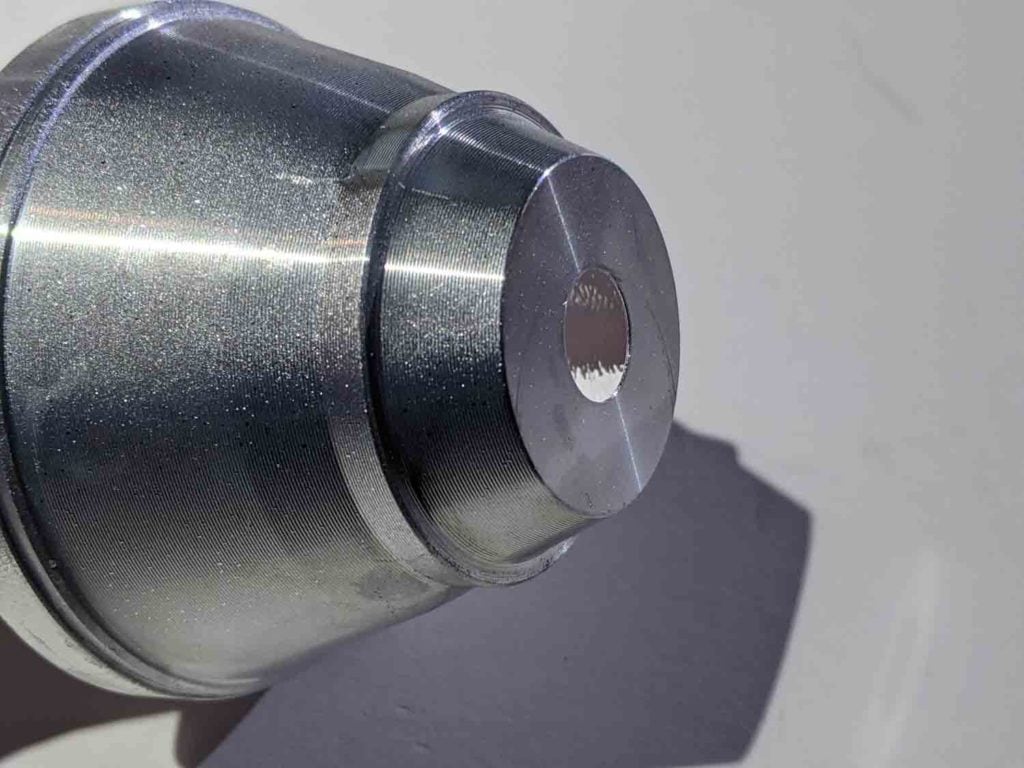
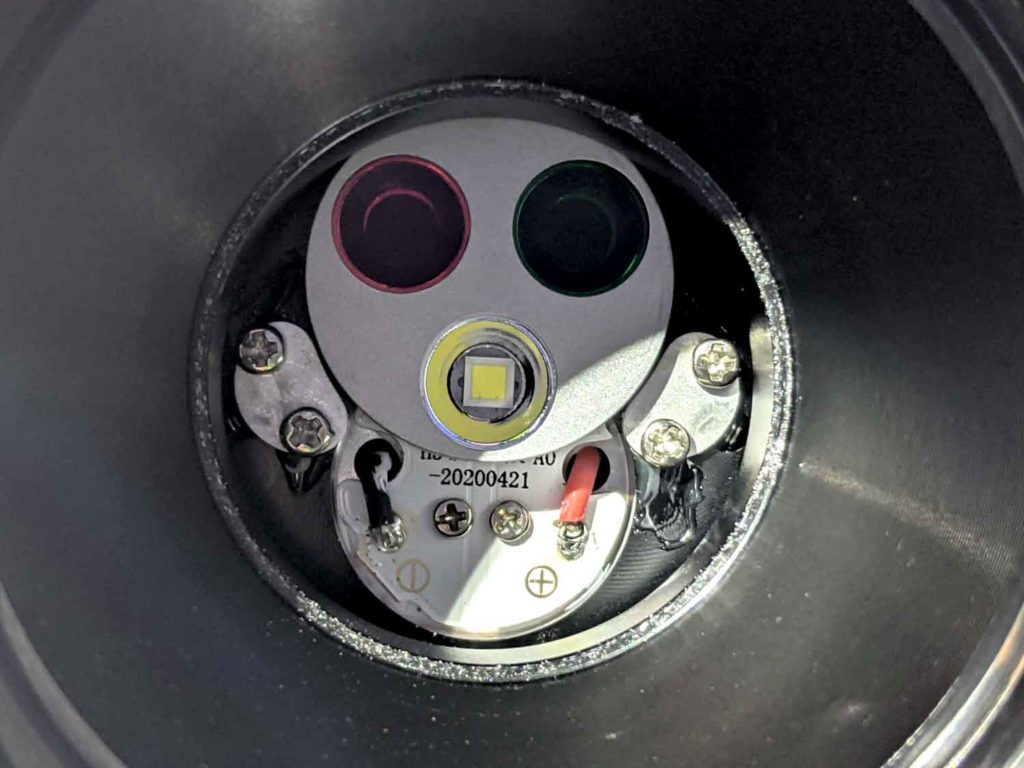
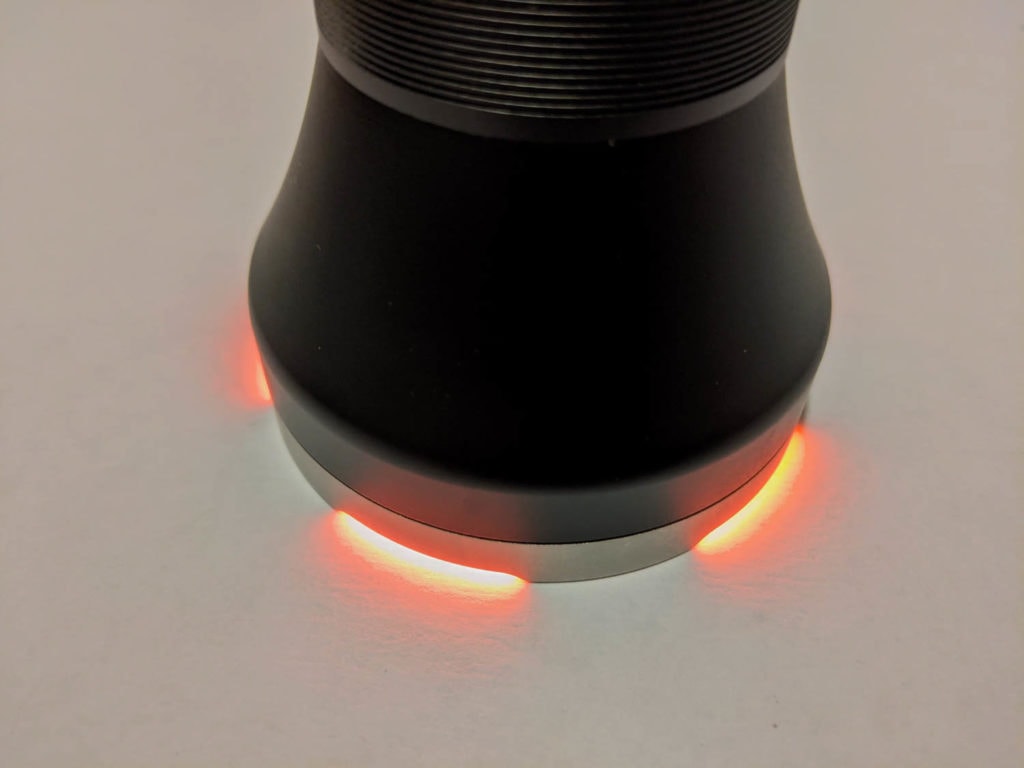
Dimensions
- Length: 18.25cm / 7.1inches
- Head diameter: 6.46cm / 2.5inches
- Tail diameter: 2.69cm / 1.0inches
- Body diameter: 2.39cm / 0.9inches
Weight:
- With cell: 303 grams / 10.7oz
- Without cell: 230 grams / 8.1oz
Long-Range flashlights compared
Size compared to other popular long-range flashlights.
From left to right: Cyansky H5, Astrolux FT03, Convoy Z1, Manker MC12.
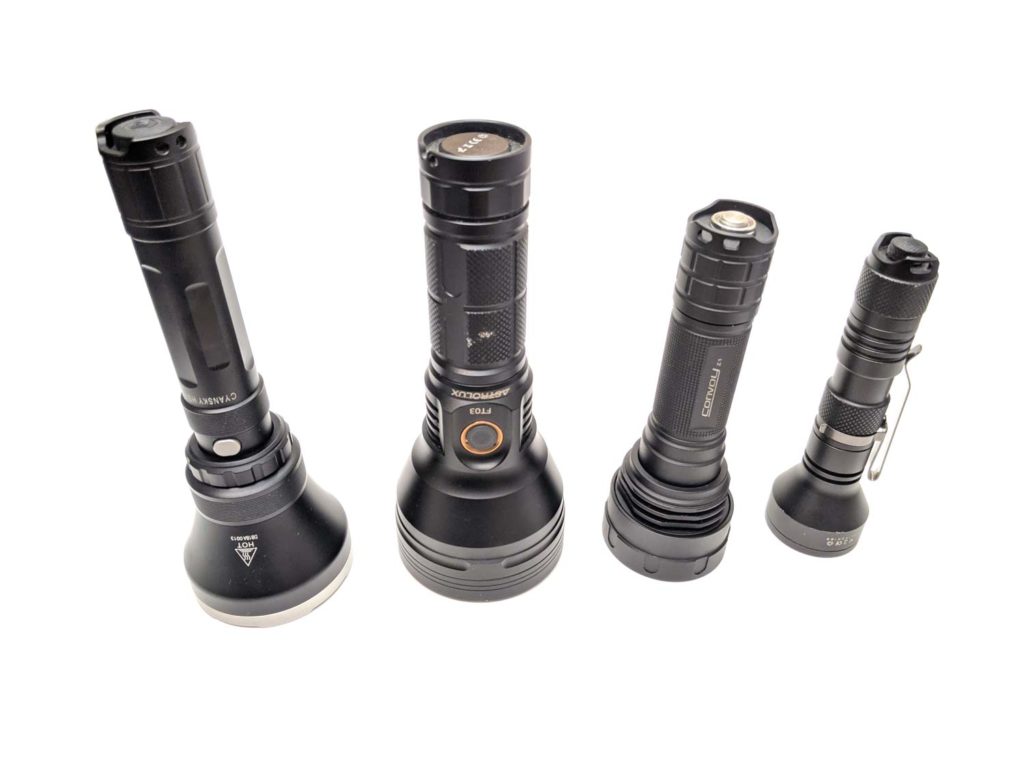
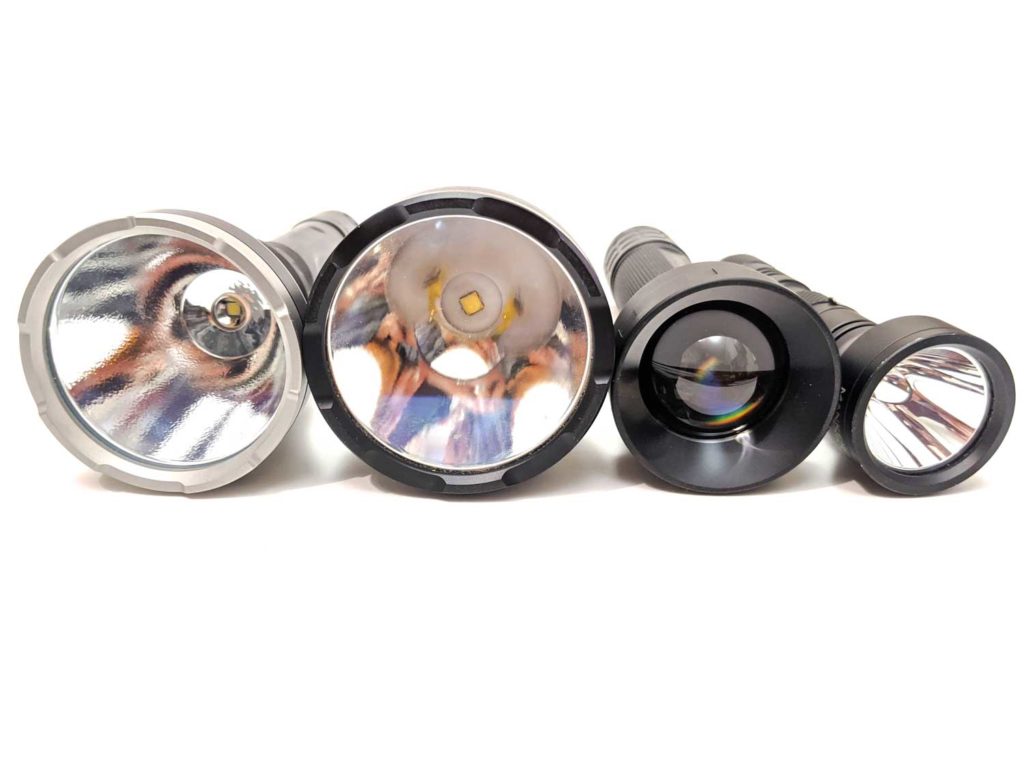
Driver & User Interface:
Modes: Low, Medium, High, Turbo, Strobe
The UI on the H5 is pretty basic, thanks to the 2 switches. The forward-clicky physical button only turns on and off – either momentarily with a half press or permanently with a full press.
The e-switch only changes modes and doesn’t turn the light on/off. Here’s how the e-switch works.
From ON:
- Single click: change mode: low, medium, high, turbo, then back to low
- Hold: activate strobe
- Physical switch turns off
From OFF:
- E-switch doesn’t do anything
- Physical switch turns on
From strobe:
- Click or hold: go back to last normal mode
There’s no double / triple click or configuration options like some e-switch lights have, so it doesn’t take long to explain how it works when lending to someone.
The H5 has mode memory, which is very useful for momentary use with the physical button.
Lock-out mode:
There’s no lockout mode but the tail cap can be unscrewed slightly to stop the light turning on
PWM
I couldn’t detect any PWM on any modes with the H5. This is as to be expected, as the H5 uses a constant current boost driver to step up the cell voltage to 12V.
Batteries & Charging
The Cyansky H5 comes with a button top 21700 cell that includes a USB-C port for charging. The cell is 76.2mm long, so won’t fit in many chargers. I have mixed opinions about putting the charging circuit on the cell. Having it on the cell means the flashlight can be more waterproof but also means that you switch cells so easily. That said, I tried a couple of standard flat top 21700 cells like a 30T and they seemed to work fine. It even worked with a button top 18650 but not a flat top one.
The cell’s built in charging seems to work well, starting off around 1.5A using an A-to-C cable, then trailing off as it got near full capacity after a bit over 3 hours. The cell has a little LED on the top: red for charging and green for complete (sorry color blind people). The circuit stops charging at exactly 4.20V.
The cell charged via a C-C cable too, which was a nice surprise.
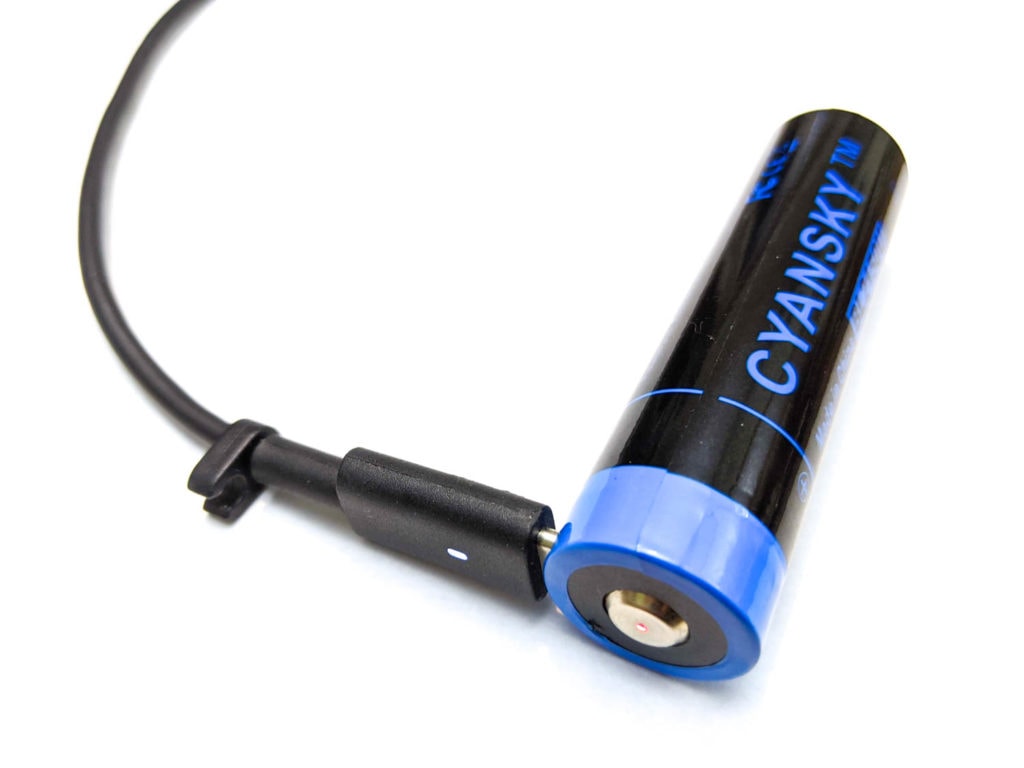
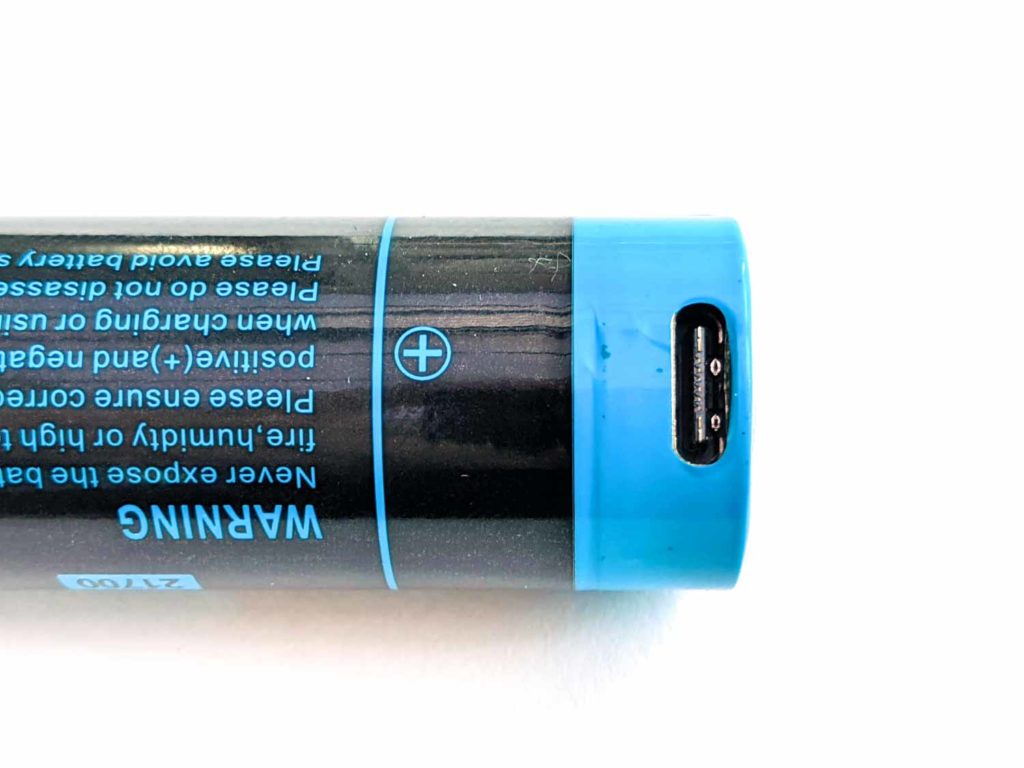
Performance
Lux meter: All lux and lumen measurements are from my home made integrating sphere, calibrated with a range of factory specced lights. Measurements are done with a UNI-T UT383S lux meter and Adafruit TSL2591 connected to a Raspberry Pi (using RuTiTe by bmengineer). Expect them to be within +/-10%.
DMM: Current readings were taken with a Precision Gold PG10B DMM, all with the cell charged to 4.20V.
When I first put the cell in and switched the light on I was a bit disappointed by the brightness, or lack thereof. The cell came part-charged, so I charged it up to 4.1V and tried again. Still not as bright as expected. Then I realised the H5 was stepping down from turbo almost immediately and wouldn’t go back to turbo from just the e-switch. Uh oh.
The cell seemed fine, so I figured there was a poor connection somewhere. I gave the end of the body tube a quick wipe with a cloth and tried again and made sure to screw the tail cap in firmly. Turbo then worked fine. The same thing happened again later but just tightening the tail cap fixed it. It seems that the H5 needs the tail cap to be tight for turbo to work properly. This is fine once you know the trick but some people may not realise and be disappointed. I’m not sure if this affects all of them, of if my sample was particularly finicky – maybe I’m just unlucky.
Amp measurement
On turbo the light was stepping down immediately due to the resistance in my DMM setup, similar to if the tailcap wasn’t screwed tightly. The 7A was the most I registered before it dropped down to high.
- Low: 0.06A
- Med: 0.5A
- High: 1.34A
- Turbo: 7.52A
Runtime graph
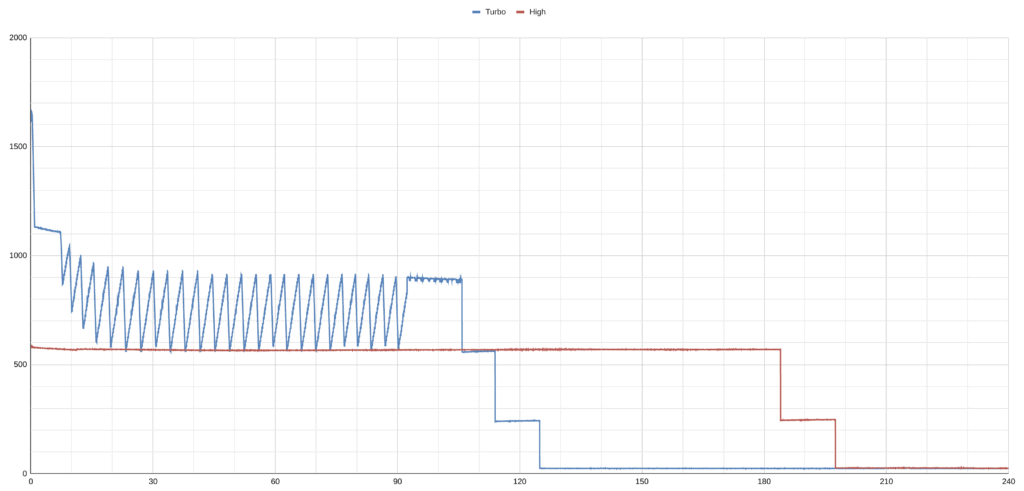
Yes, turbo is weird.
From 1649 lm on turbo, the H5 starts stepping down after 30 seconds and hovers around 1100 lm. After holding that for 7 minutes we start to see something very odd. The light drops fairly suddenly, then ramps back up a bit. It does this 24 times, every 3 minutes, between 600 and 900 lm. I recharged the cell and did the same test again, with the same result. Don’t worry – this sawtooth pattern may be obvious on a chart but isn’t nearly so noticeable when using the light normally.
After an hour and a half zigzagging on turbo, it decides to follow tradition and keep a steady 850 lm, then drop down to high (550 lm) and then medium (200 lm). After 2 hours the light has dropped down to the 20 lm low – not as long as the 3 hours claimed on the box. I’d expect it to continue low (at 0.06A) for a while longer but that’s well under 10% of high, so wouldn’t count towards ANSI/NEMA FL1 run time.
High on the H5 is more like what you’d expect from a boost driver. 3 hours in a straight line, followed by a drop to medium for 20 minutes, then a drop to low. Still, a bit under the 4 hours claimed.
Lumen measurements (for each mode)
Cyansky seems to be a bit conservative with their measurements. The XHP35.2 hit 1649lm at turn on with a full cell at 0s. This isn’t a big surprise, as other manufacturers drive the same LED to over 2000lm.
I’ve included measurements for the light with the green and red filter on but note that my integrating sphere isn’t calibrated for these colors. In fact I was getting different lux readings from different devices. By eye, red-turbo is not quite as bright as white-medium and green-turbo is slightly brighter than white-medium.
| Mode | White 0s | White 30s | Green 30s | Red 30s |
| Low | 28 | 28 | 7 | 1 |
| Medium | 237 | 237 | 56 | 24 |
| High | 562 | 555 | 120 | 53 |
| Turbo | 1387 | 1326 | 215 | 70 |
Edit October 2021: these measurements were done before the calibration light arrived. Turbo measurements were updated in October 2021. This doesn’t reflect the runtime graph yet.
Throw numbers:
Throw was measured at 5m with the UNI-T UT383S.
- 97,326 cd / 624m (104% of claim)
The large reflector and XHP35 in the H5 makes it a moderately throwy light but at 60cd/lm has enough spill to be usable and ends up quite a balanced beam.
Beamshots
Distance to the building is 170m. Photos were taken with a Pixel 3a, set to 1/2s shutter speed and ISO 400, F1.8.
- Astrolux FT03 (4300lm, 735m)
- Convoy Z1 (580lm, 970m)
- Manker MC12 (670lm, 650m)
- Cyansky H5 (1300lm, 600m on white, 180m on red, 313m on green)
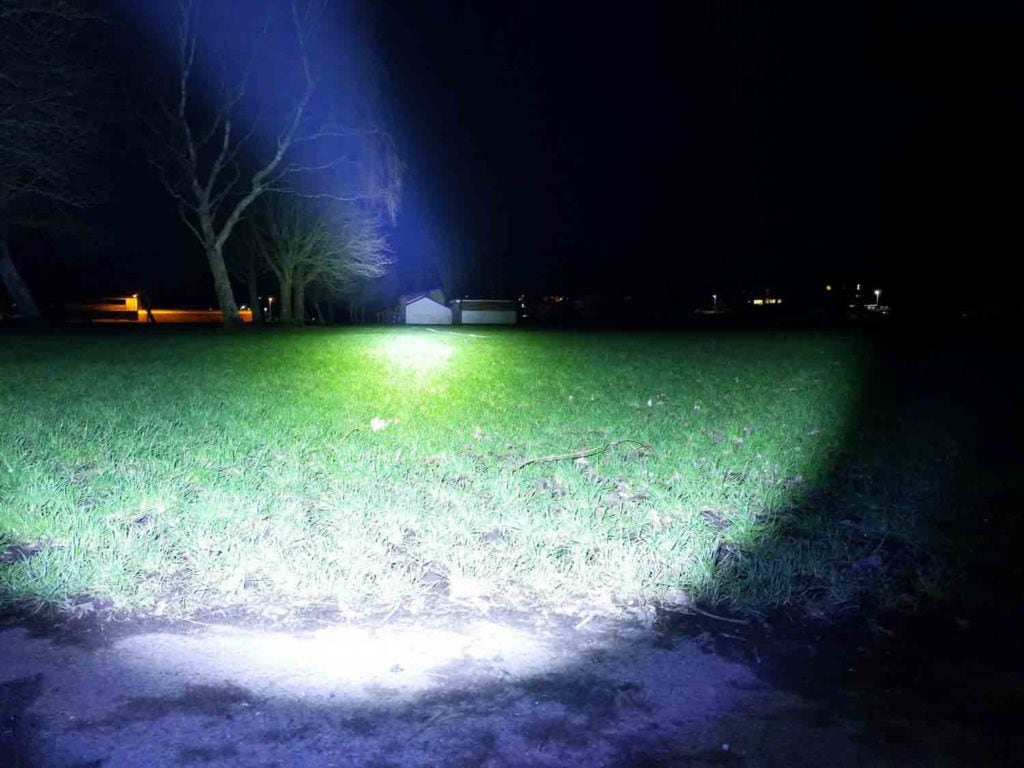
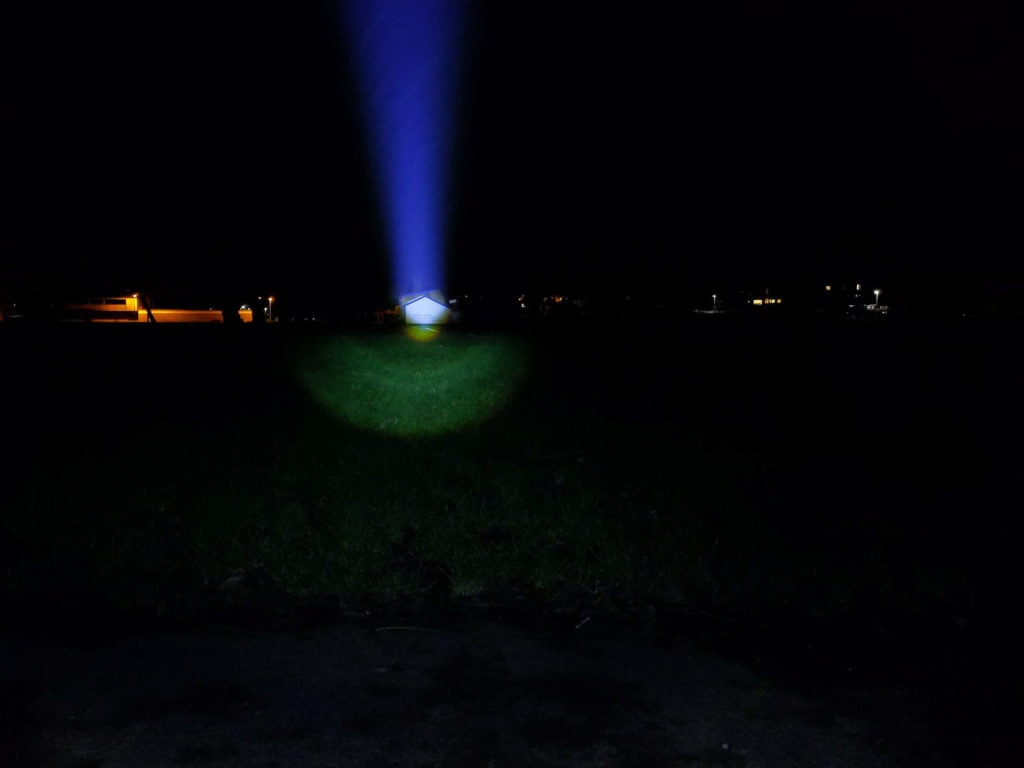
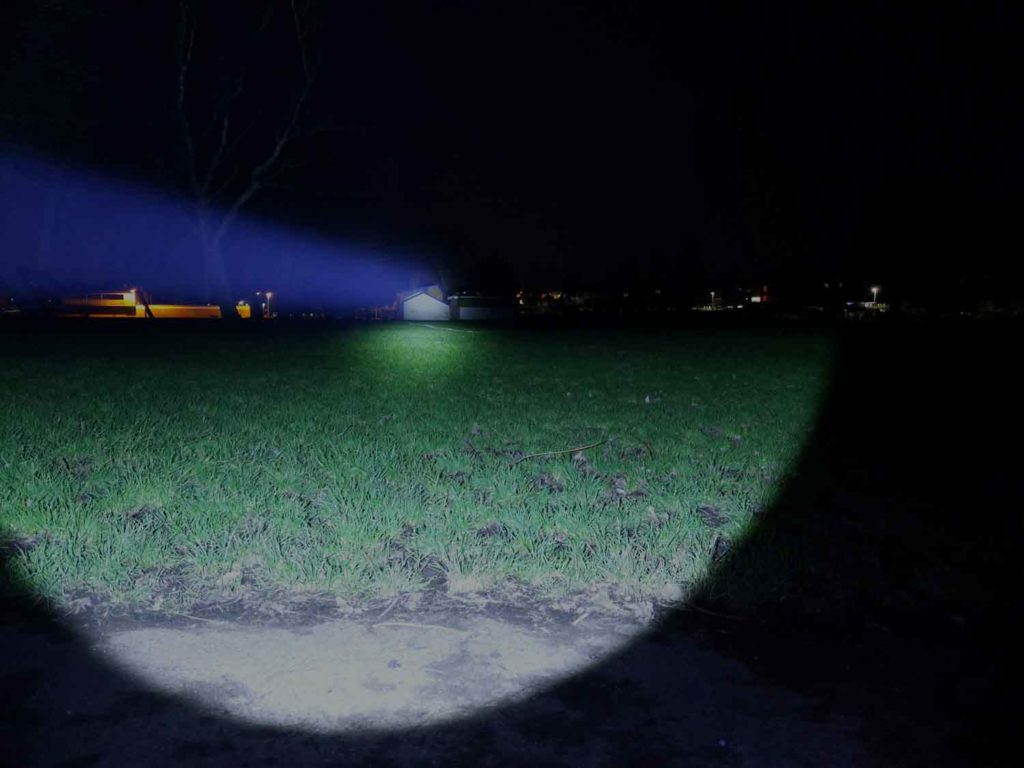
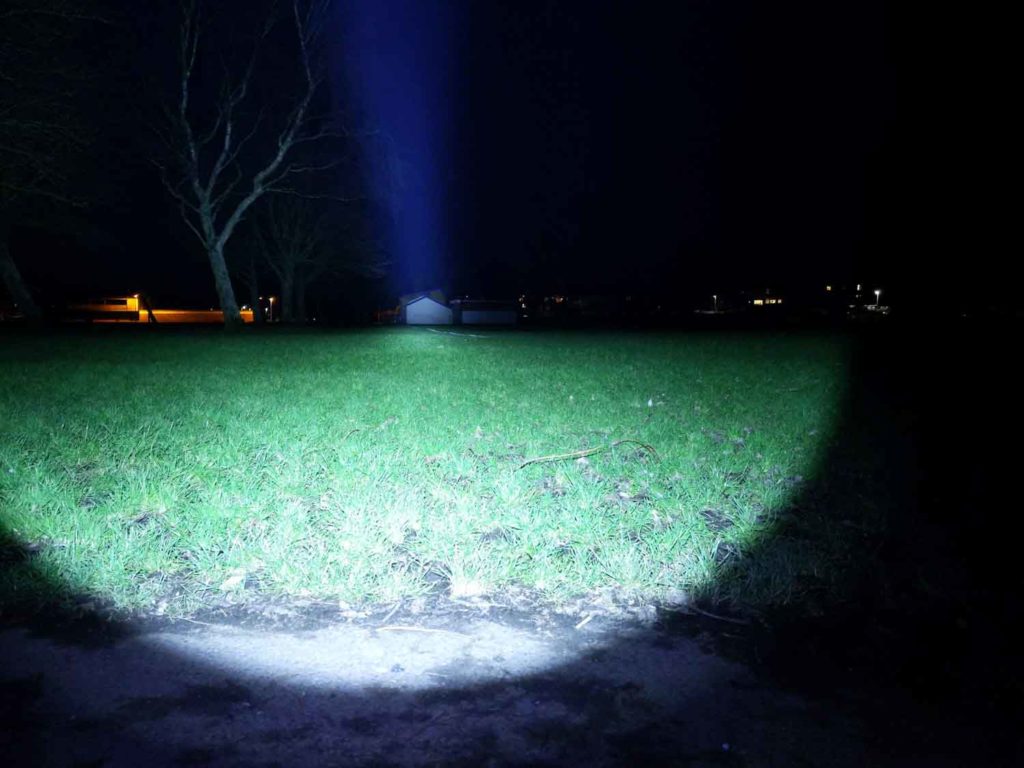
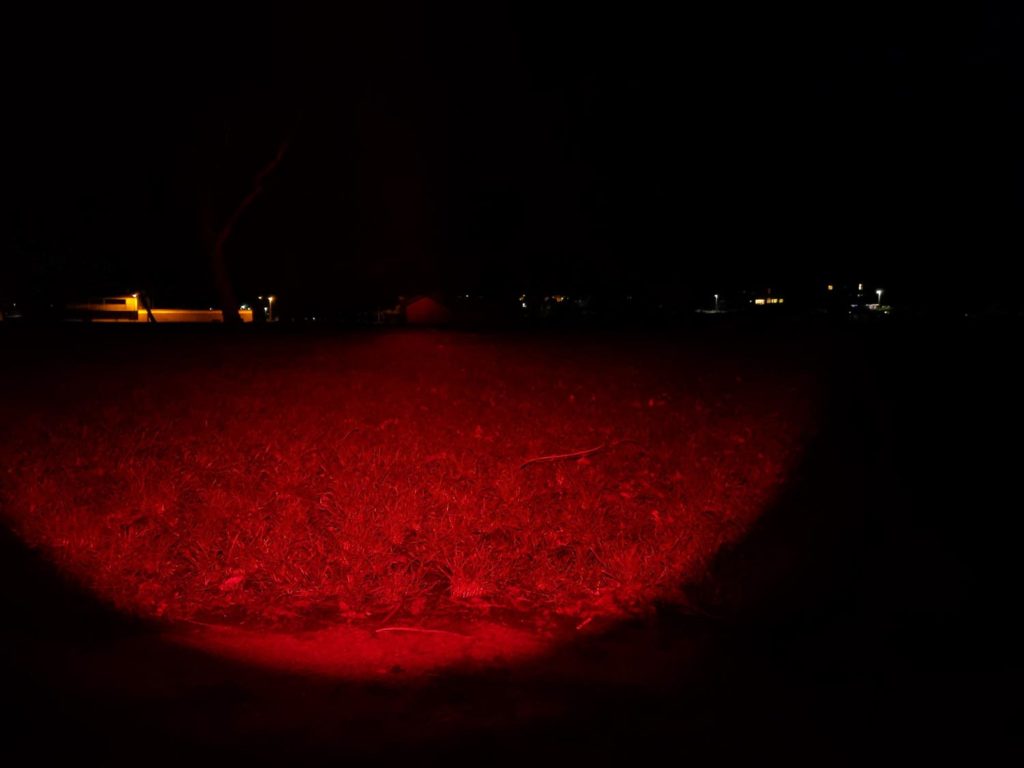
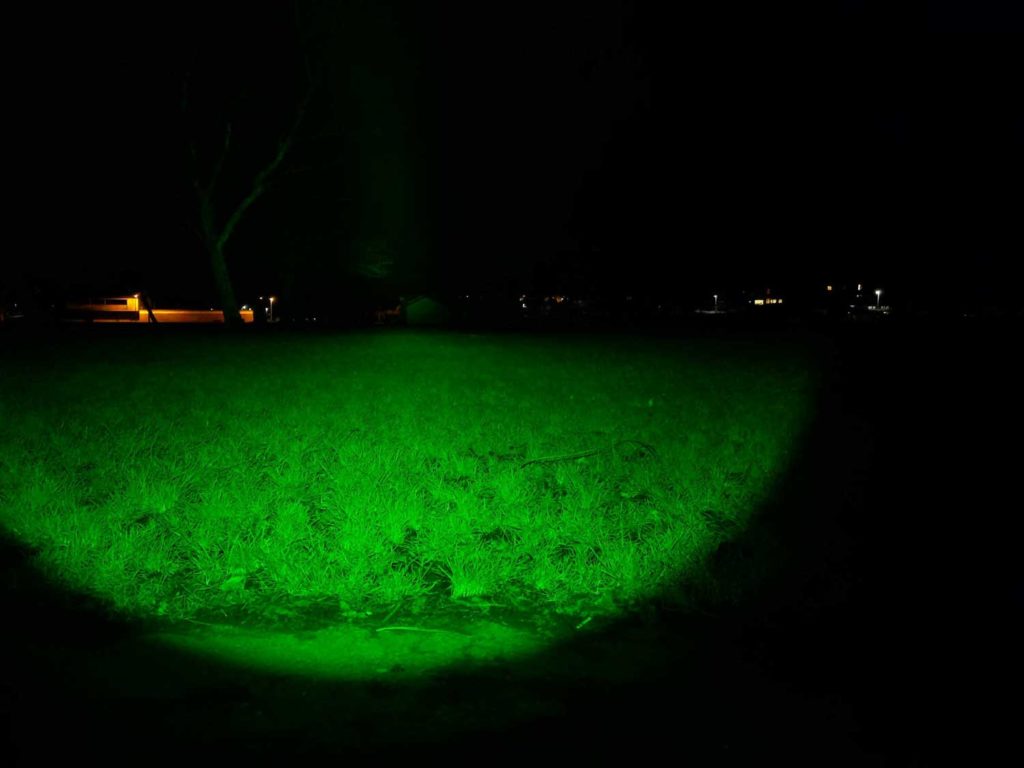
Disclaimer: This flashlight was sent to me for review at no cost by Cyansky. I have not been paid to review, nor have I been holding back on problems or defects.
Final Verdict
Pros
- Color filter mechanism work well
- Beam is surprisingly good
- Simple UI
- Meets or exceeds lumen specs
Cons
- Drops down to high if tail cap not screwed tight
- Run times not quite to spec

4.5 stars: ★★★★⋆
When I first saw the H5, I thought combining multiple colours into 1 flashlight was going to have the same effect as combining a thrower and flooder into 1 zoomie flashlight: worse performance and an unreliable mechanism. That’s not the case with the Cyansky H5 though. Cyansky were brave with their innovation and in my opinion they have pulled off their color filter switch successfully. The flashlight industry could do with more manufacturers trying new things, so I commend Cyansky for this.
The H5 is like a great option if you want a red and/or green light combined with white. Having one LED with filters gives a better beam, more brightness and more throw than having separate LEDs like the Olight Freyr, Nitecore MH27 or Wurkkos WK30. There’s a few lights with separate color filters you can add (Klarus XT11, Fenix HT18, Acebeam Acebeam W10 and Acebeam W30) but that requires more to carry around.
That said, if you want just a red or green light then there’s better flashlights available with higher performance. Such as a Manker, Noctigon or Acebeam flashlights with either red or green Osram emitters. As someone who has a fair few flashlights, generally I’d rather have specialist ones for each requirement, rather than a one-size-fits-all. I don’t need a red or green flashlight and if I did then I’d pick one of each color. That way I’d also have a valid excuse to get 3 flashlights, not just 1 (and more flashlights is always better, right?).
There’s also white lights the same size that are brighter and throw further, so by choosing the red/green/white combo you’re still making a sacrifice. Cyansky could have driven the XHP35 LED a bit harder for a few more lumens and meters. Even if you don’t have a use for the red and green then the H5 is still a reasonably good light to get. It’s not the furthest throwing or most efficient but it’ll do the job fine.
Now to the rating. This is really difficult. For just the white LED it’d get 4 stars. For the just red or just green you’d be better off with an actual colored LED, so it’d get 3 stars. But if you’re reading this review then you probably have a good reason to get a flashlight that can do more than just white. In that case, the Cyansky H5 is for you. In fact for what it is, it’s probably the best option out there. I’d rate this 4.5 stars if I could but as I have to pick a whole number I’m going to round it up 5 stars, rather than rounding down.
Buy the Cyansky H5 replacement
The Cyansky H5 has been replaced by the Cyansky H5GT we also reviewed, so check out its review. The product linked below is the upgraded version.
1lumen selects and reviews products personally. We may earn affiliate commissions through our links, which help support our testing.